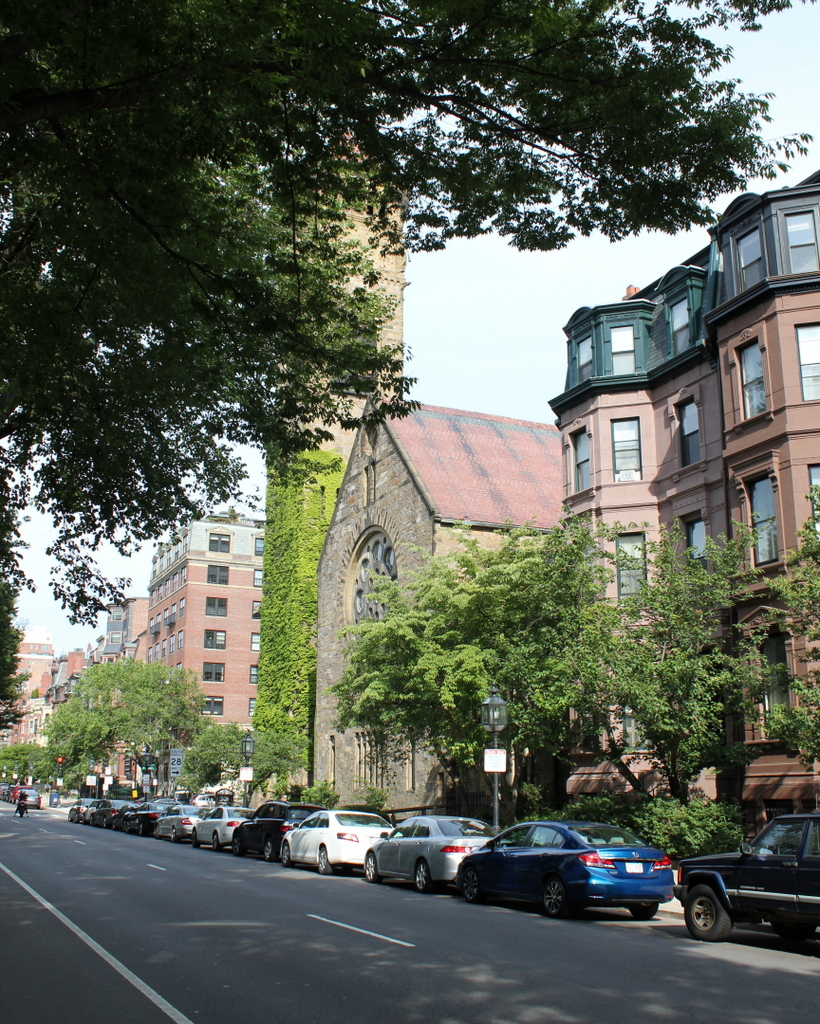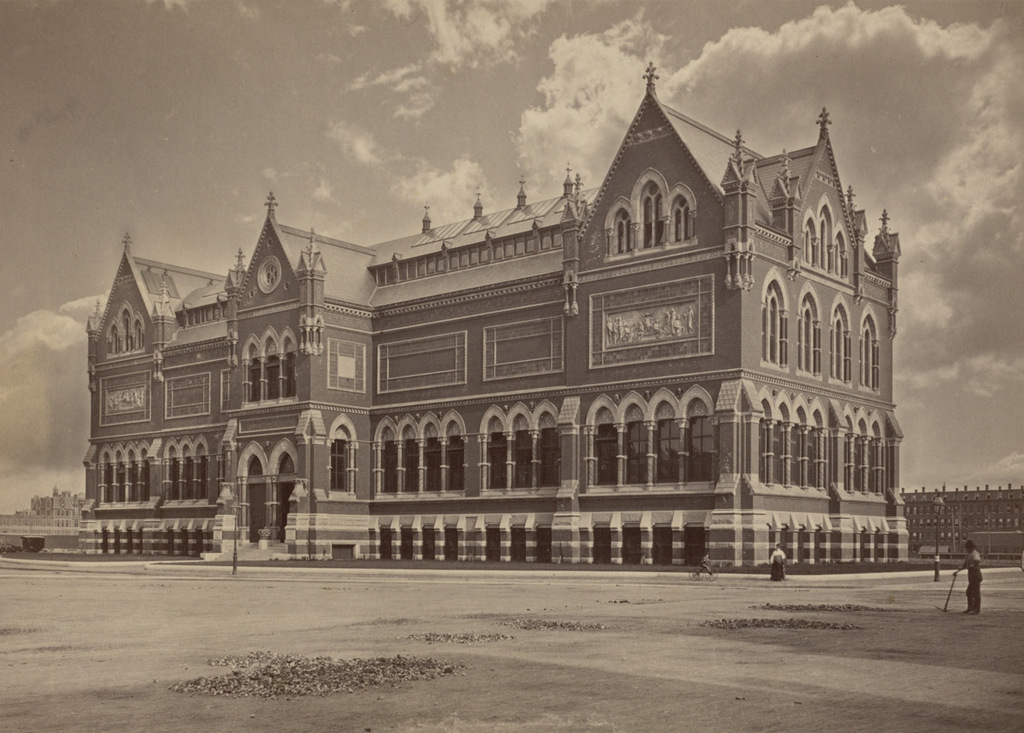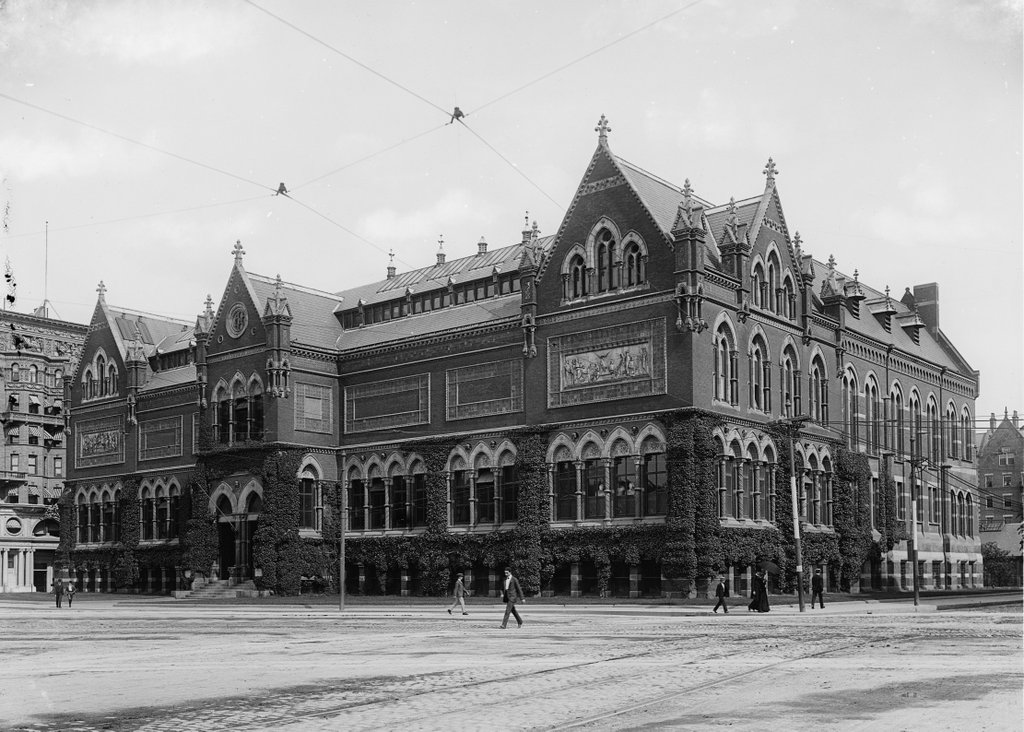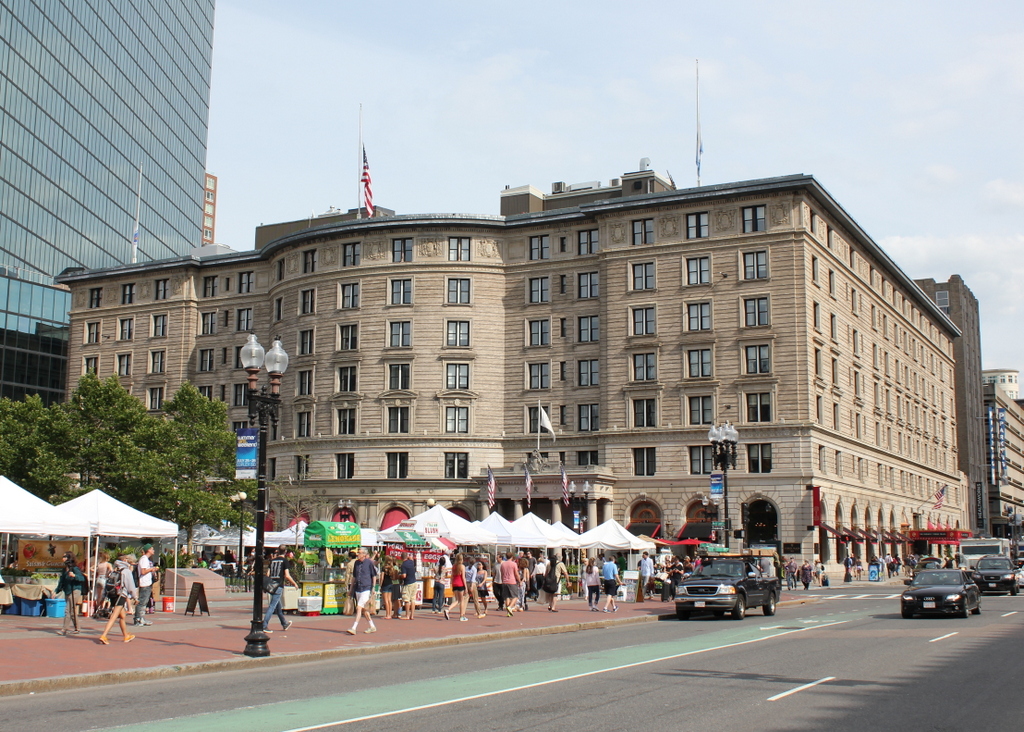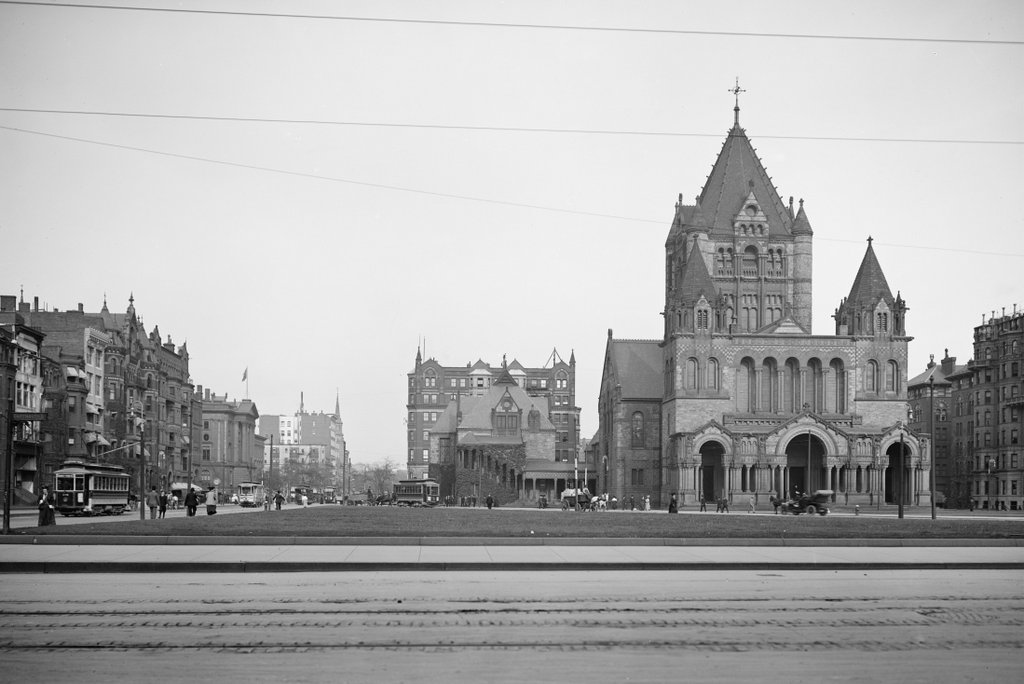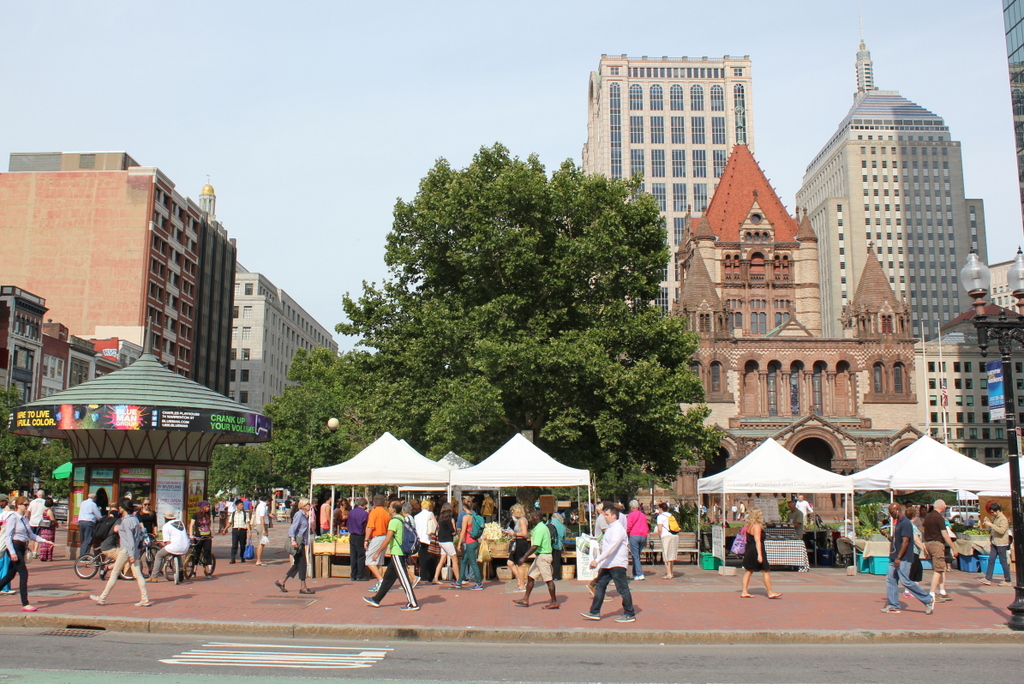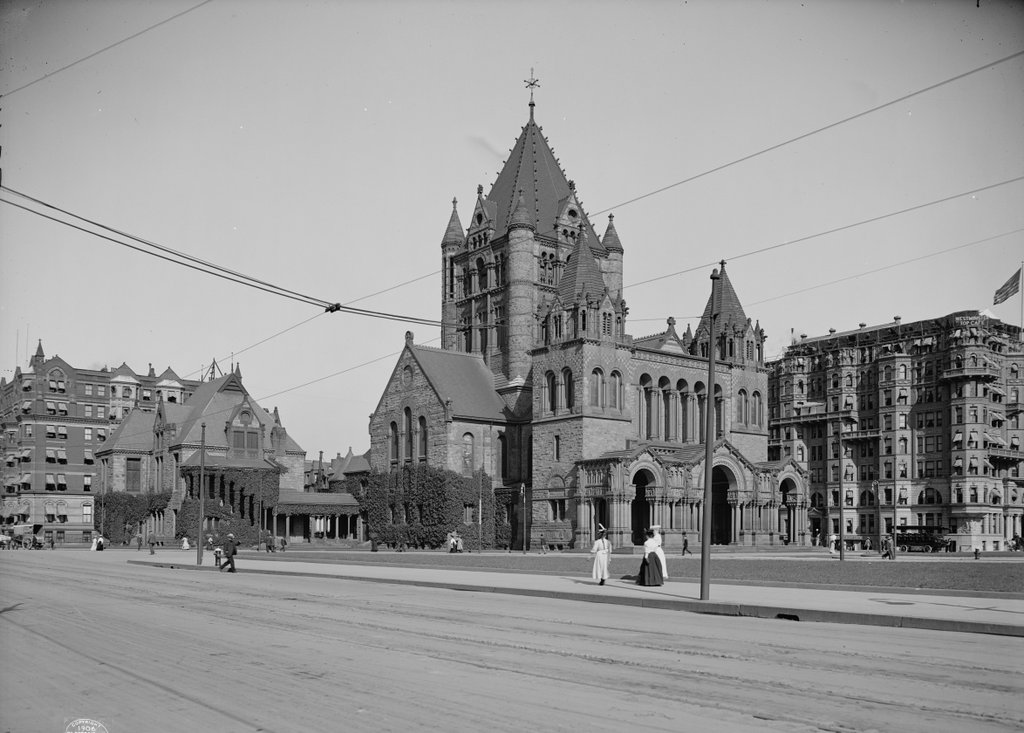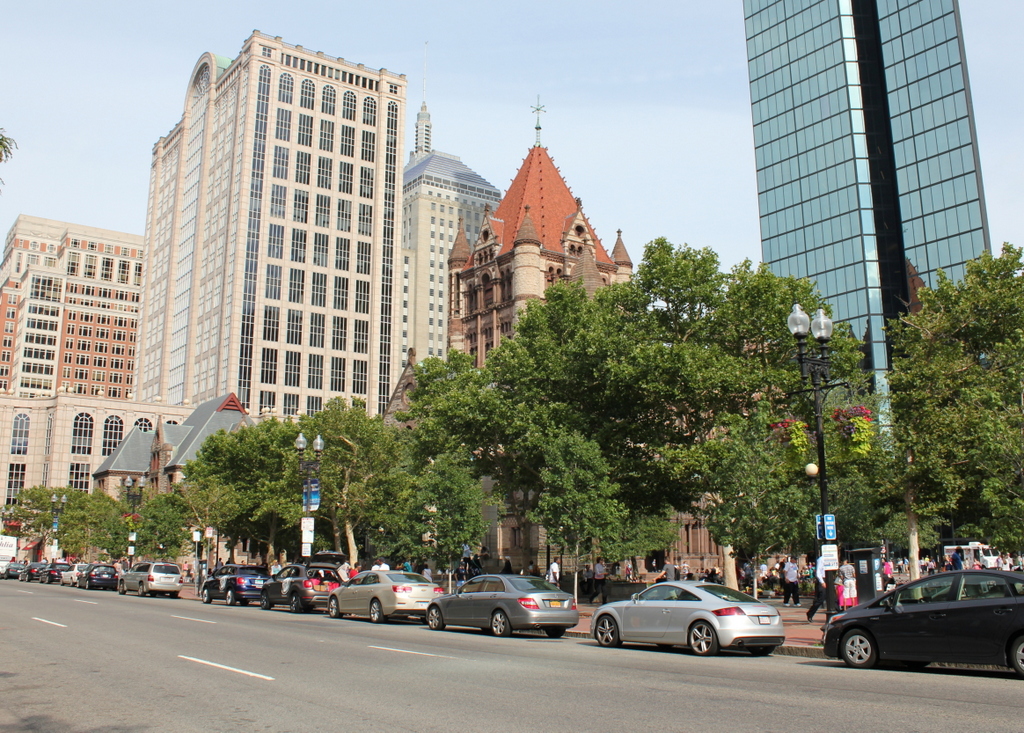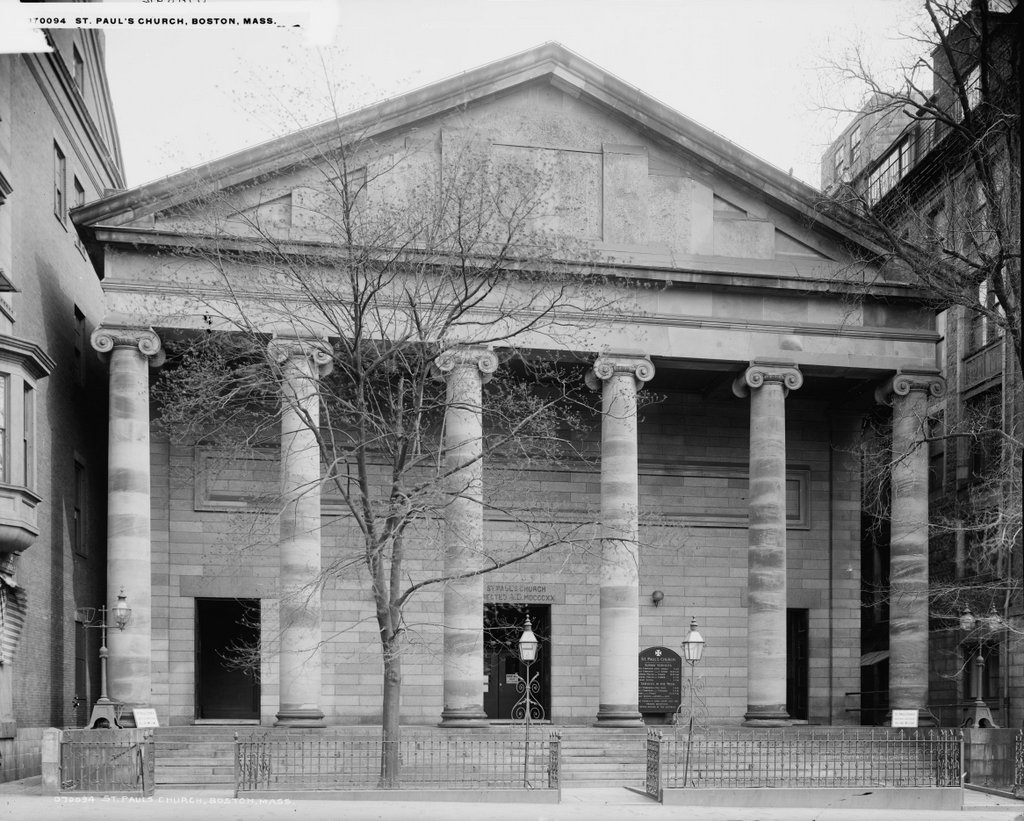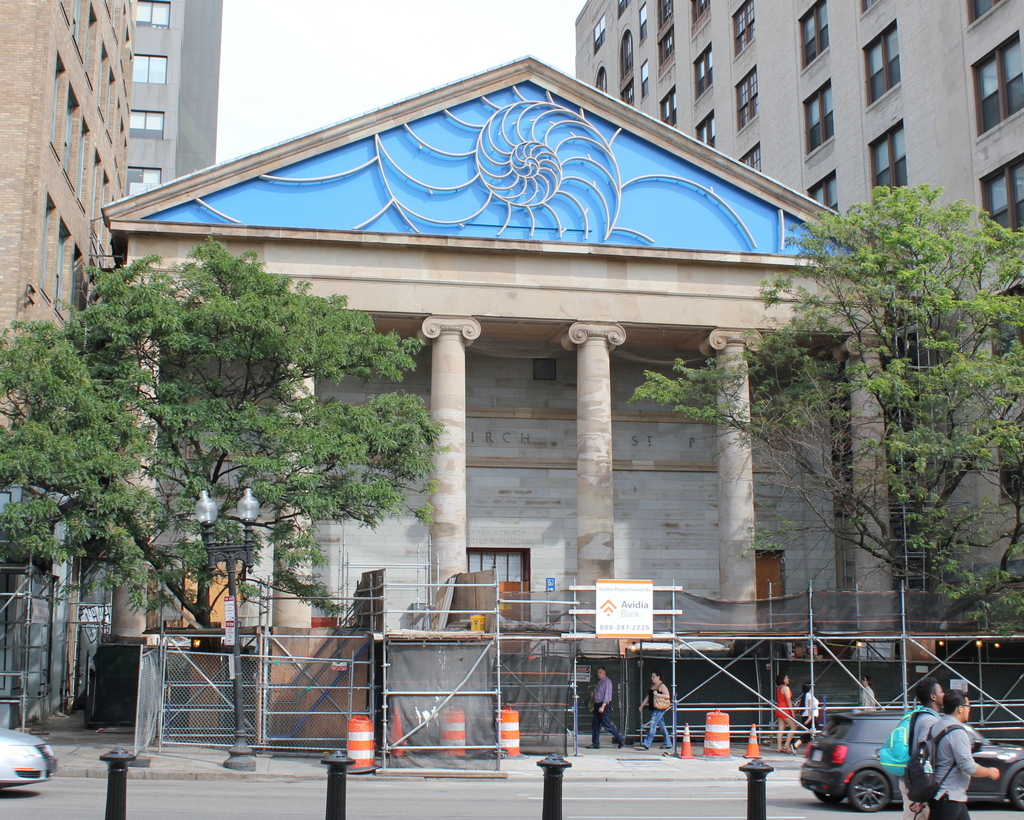The Berkeley Building at the corner of Boylston and Berkeley Streets in Boston, around 1908. Image courtesy of the Library of Congress, Detroit Publishing Company Collection.
The building in 2015:
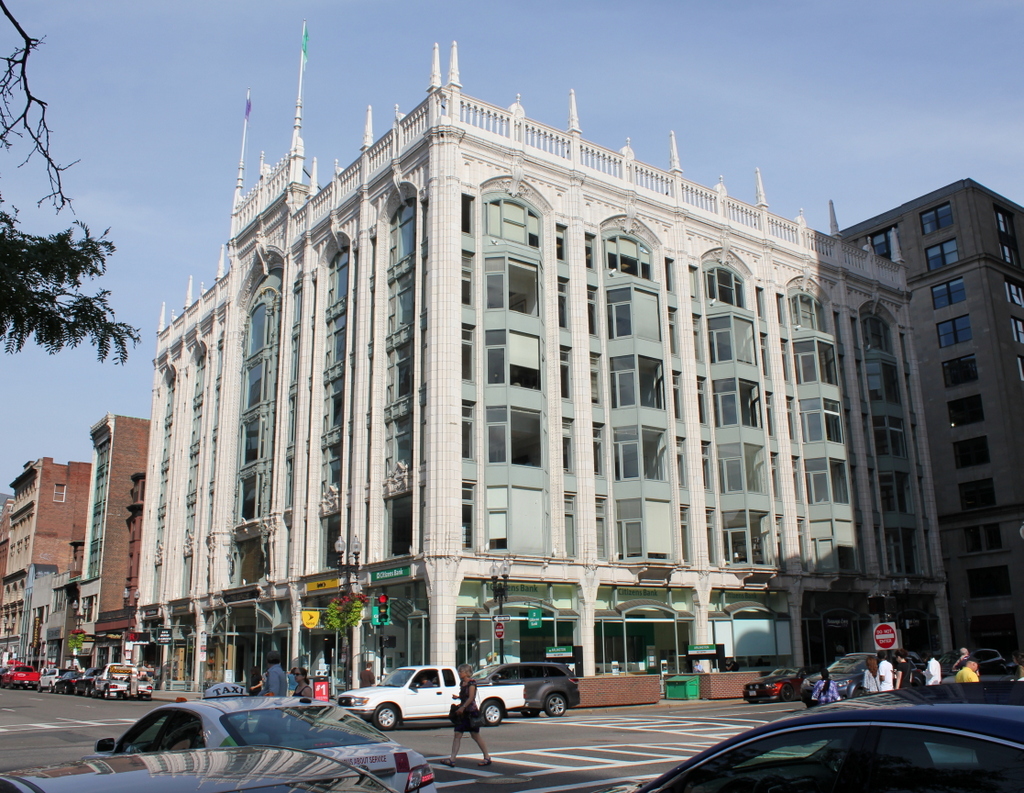
Not to be confused with the old John Hancock Building a block away, which is also known as the Berkeley Building, this building was completed in 1905 and is an excellent surviving example of Beaux-Arts architecture in Boston. It was designed by Stephen Codman and Constant-Désiré Despradelle; the latter was a noted architect and professor at MIT, which at the time was located diagonally across from here. Over a century later, the building is still in good condition, with even the original 1905 storefronts still intact.
Also of note in the first photo is the group of rowhouses just to the right of the Berkeley Building. These were built in 1861 and were among the first houses to be built in the newly-filled Back Bay area. Over time, Boylston Street became a major commercial center, and most of the original homes were demolished. These ones survived into the early 20th century, but the first photo shows drastic changes on the ground level to create storefronts. The one in the middle would be demolished soon after the first photo was taken, but the houses on either end are still standing today, although they are mostly hidden behind 20th century alterations.



